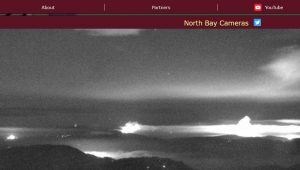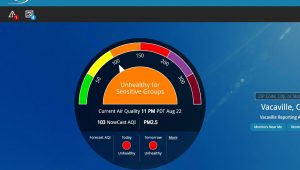A: Do you have a private well or public water service? If your home is served by a public water service provider, you will want to contact them directly for updates.
✔ SID: https://www.sidwater.org/
✔ Rural North Vacaville: https://rnvwd.com/
✔ City of Vallejo Lakes Water System https://www.cityofvallejo.net/city_hall/departments___divisions/water_department
If you have a private well:
There are number of things to keep in mind if you have had fire damage that compromised your well: When it is safe to do so you can check for:
✔ Damaged and melted or exposed electrical wiring
✔ Damaged and melted PVC casing, liner, or pipe
✔ Damaged well houses and pressure tanks
✔ Debris, ash, sediment, entering uncovered wells
Do the Following:
✔ Barricade / flag the area around the area of the well as a warning
✔ Contact a licensed and bonded well driller or a pump installer to determine the extent of damage and what must be done to repair or destroy the well
✔ If you think the fire damaged your water supply, bring water back with you when you return home.
Do Not
✔ Handle wiring that has been damaged by fire
✔ Do not touch the casing
Wells must be maintained to prevent health hazards. Take steps to ensure your water is safe to drink after an emergency.
Disinfection of Private Domestic Water Wells
Disinfection of a well is recommended to eliminate disease causing organisms. A well should be disinfected following a repair, maintenance or replacement of the pump or if the power has been off for an appreciable period possibly causing the pressure tank to lose pressure and the distribution system to back siphon into the well causing possible contamination. Disinfection generally involves five (5) steps:
Remove the threaded inspection plug from the cap on top of the well. Place a funnel in this entry port and pour one (1) to three (3) gallons of domestic 5.25% chlorine bleach into the well. Should you wish to be more precise in this effort, introduce one gallon of bleach per 1000 gallons of water. You may calculate this as follows:
a) Determine the amount of water in the well using the following formula:
TOTAL WELL DEPTH – STANDING WATER LEVEL = FEET
________________ – ____________________ = ____
b) Take the gallons per foot (gpf) using the chart below times the number of feet to determine capacity.
WATER IN WELL x GALLON PER FOOT = TOTAL GALLONS
___________ ft x gpf ___________ = _____________
4″ Well has .65 gallons per foot
5″ Well has 1.04 gallons per foot
6″ Well has 1.47 gallons per foot
7″ Well has 2.00 gallons per foot
8″ Well has 2.61 gallons per foot
c) Determine the amount of chlorine needed to disinfect the well. Remember, you need use only one gallon of .25% bleach per thousand gallons of water!
✔ Open all faucets until the odor of chlorine is detected at water outlets, including faucets or fittings, sprinklers, drip lines, irrigation lines, etc.
✔ Close all outlets and allow water to remain in all water lines and well, preferably overnight or longer if possible. Be sure to limit water usage during these critical hours.
✔ The next day or longer open all outlets until the odor of all chlorine has disappeared. The water supply should then be free of all chlorine.
✔ Have the water sampled by a state certified laboratory for bacteriological quality.
Note: Disposal of chlorinated water should be done away from trees, shrubs, lawns, ponds and streams. It is important to avoid discharging highly chlorinated water in large volumes into septic tank systems.




